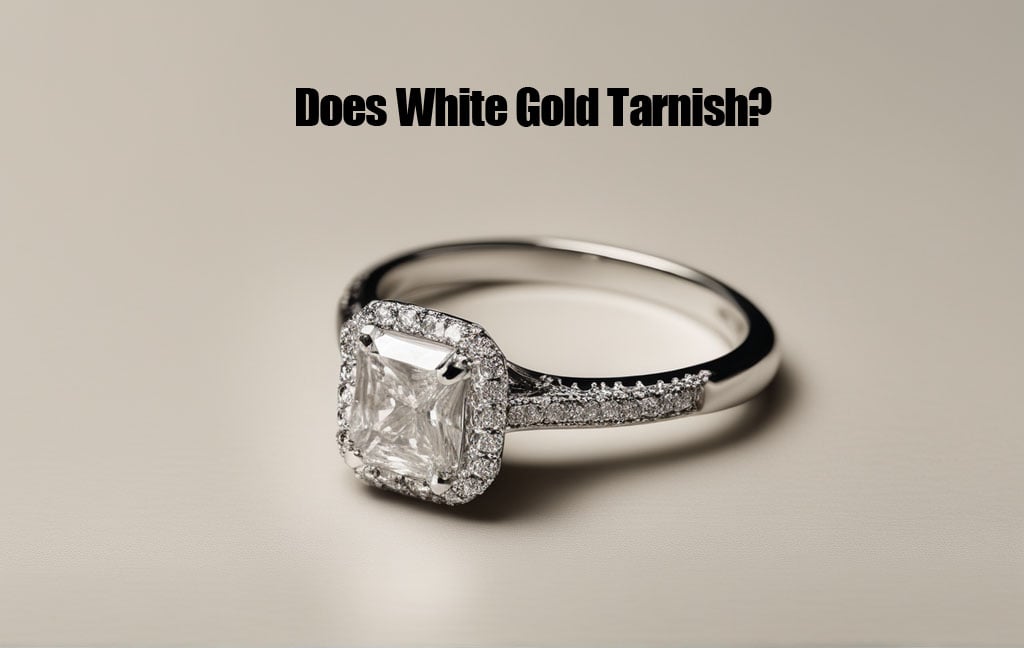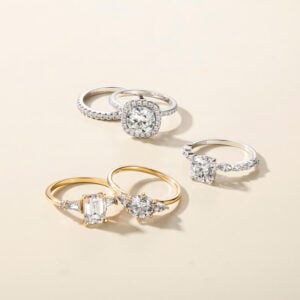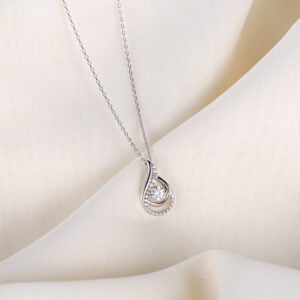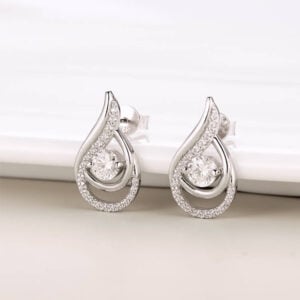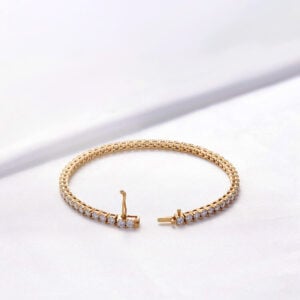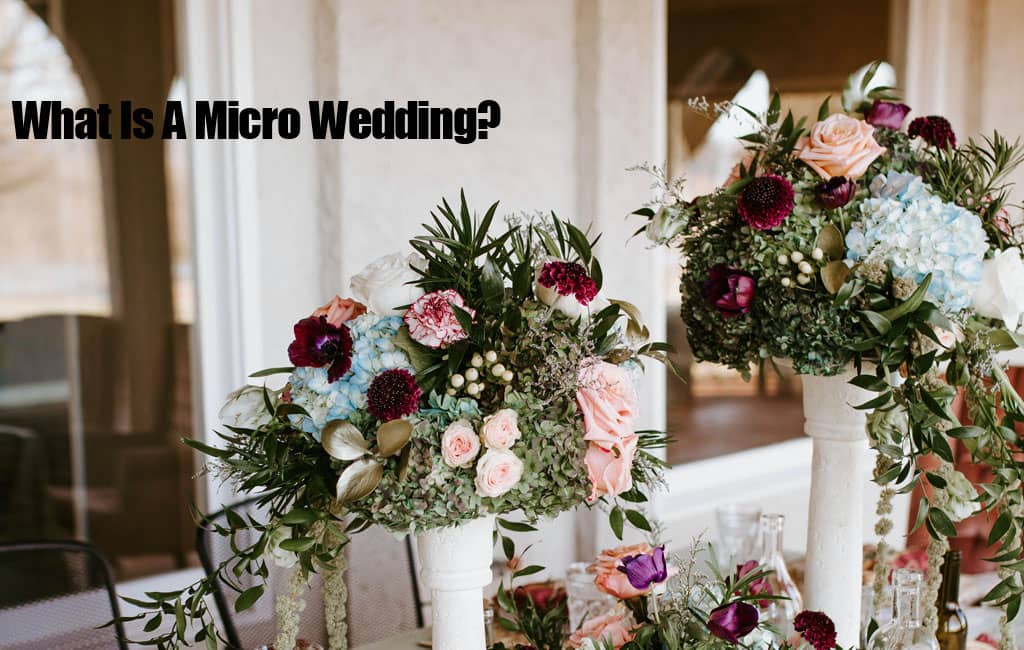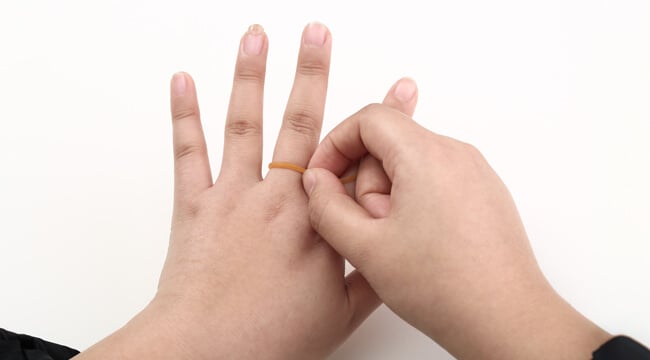In the realm of eternal allure and sophistication, white gold has risen as a favored choice among connoisseurs of jewelry across the globe. Its resplendent sheen, coupled with its endurance, positions it as a paramount contender in the realm of precious metals.
Nevertheless, an imperative query tends to linger in the thoughts of those contemplating white gold as their preferred jewelry medium: Does white gold tarnish?
What is White Gold?
Before we embark on the exploration of tarnish and its association with white gold, let us first apprehend the essence of white gold. Diverging from the domain of pure gold, white gold does not occur naturally; it is an artifice crafted by blending pure gold with ancillary metals such as nickel, palladium, or silver. This amalgamation bestows upon the gold a glistening silvery-white demeanor, rendering it a captivating alternative to conventional yellow gold.
What is Tarnish?
Tarnish epitomizes an undesired metamorphosis manifesting on the surface of metals, predominantly afflicting metals like silver, copper, and brass. It materializes as a lackluster, discolored stratum that eclipses the once-dazzling surface, resulting in a decline in its aesthetic allure. This process is primarily an outcome of the metal’s interaction with its milieu, particularly when subjected to moisture, compounds imbued with sulfur, or other atmospheric agents.
To obtain a comprehensive grasp of the intricacies of tarnish, it is imperative to delve into the chemistry that underpins this phenomenon. Tarnish primarily ensues from a chemical interplay between the metal and elements within its environs. For instance, silver tarnish, recognized as silver sulfide (Ag2S), takes form when silver undergoes a reaction with sulfuric compounds present in the atmosphere. This chemical reaction culminates in the formation of a somber, tarnished veneer on the silver’s exterior.
Can White Gold Tarnish?
To address this query succinctly – white gold is not susceptible to tarnish. One of the most enduring misconceptions surrounding white gold pertains to its vulnerability to tarnishing. Tarnish, characterized by the emergence of a thin patina on the metal’s surface due to chemical interactions with environmental components such as oxygen or sulfur, is typically associated with silver. However, white gold does not undergo analogous tarnishing processes.
White gold evades tarnishing in a manner distinct from silver. Silver tarnish arises from a chemical reaction with sulfuric compounds, which can lead to darkening of the metal. Conversely, white gold exhibits limited susceptibility to this variety of tarnish, chiefly owing to its minimal sulfur content.
Nevertheless, while white gold itself remains impervious to tarnish, alterations in its appearance can manifest over time due to various factors:
- The Role of Rhodium Plating Numerous white gold jewelry items undergo a veneer of rhodium plating, a gleaming and reflective metal belonging to the platinum family. Rhodium plating imparts the iconic luminous white demeanor to white gold. With the passage of time, this plating may erode, causing the jewelry to experience a diminution in its brilliance. It is important to note that this is not tantamount to tarnishing; rather, it constitutes a natural progression that can be readily rectified by re-plating the jewelry.
- The Impact of Wear and Tear Irrespective of the metallic composition, jewelry is prone to displaying signs of wear and tear over time. Day-to-day activities, exposure to chemical agents, and physical contact can all contribute to the emergence of subtle blemishes on the surface of white gold jewelry. These imperfections can impede the jewelry’s brilliance, yet they are amenable to professional polishing, thus restoring their original lustrousness.
How to Care For White Gold Jewelry
Prudent Avoidance of Chemicals
One cardinal rule for preserving the resplendence of white gold is to shield it from chemicals. Compounds found in household cleaning agents, fragrances, and certain lotions possess the capacity to tarnish and diminish the metal’s sheen over time. It is prudent to remove white gold jewelry before engaging with such substances and to don it only after the substances have fully dissipated.
Periodic Cleansing Rituals
To sustain its innate luster, it is advisable to delicately cleanse white gold jewelry with a soft, lint-free fabric following each usage. This practice eliminates oils, perspiration, and grime that may accumulate and obfuscate its brilliance. For more comprehensive cleansing, concoct a mild soapy solution using tepid water and a few droplets of gentle dish detergent. Immerse the jewelry for several minutes, followed by a gentle scrub using a soft-bristle toothbrush to access crevices. Rinse under a flowing stream of water and pat dry with an unblemished cloth.
Prudent Storage Practices
Prudent storage procedures assume pivotal significance in averting abrasions and entanglements. Isolate white gold pieces within velvety, cushioned jewelry receptacles or pouches. In instances where multiple items share storage, exercise vigilance to prevent mutual abrasion, as such contact can engender undesirable marks.
Re-Rhodium Plating
As mentioned earlier, many white gold pieces are rhodium-plated to maintain their whiteness. Over time, this plating can wear off, revealing the underlying alloy’s color. To restore its original brilliance, have your jewelry re-rhodium plated by a professional jeweler when necessary.
Conclusion
The misconception that white gold tarnishes stands debunked. White gold, in its essence, remains impervious to tarnishing as experienced by silver. Any variations in the visage of white gold jewelry are primarily attributable to factors such as the erosion of rhodium plating, daily wear and tear, and the absence of meticulous upkeep.
To preserve the pristine allure of white gold jewelry, it is imperative to administer assiduous care and seek professional cleaning and restoration as necessitated.

